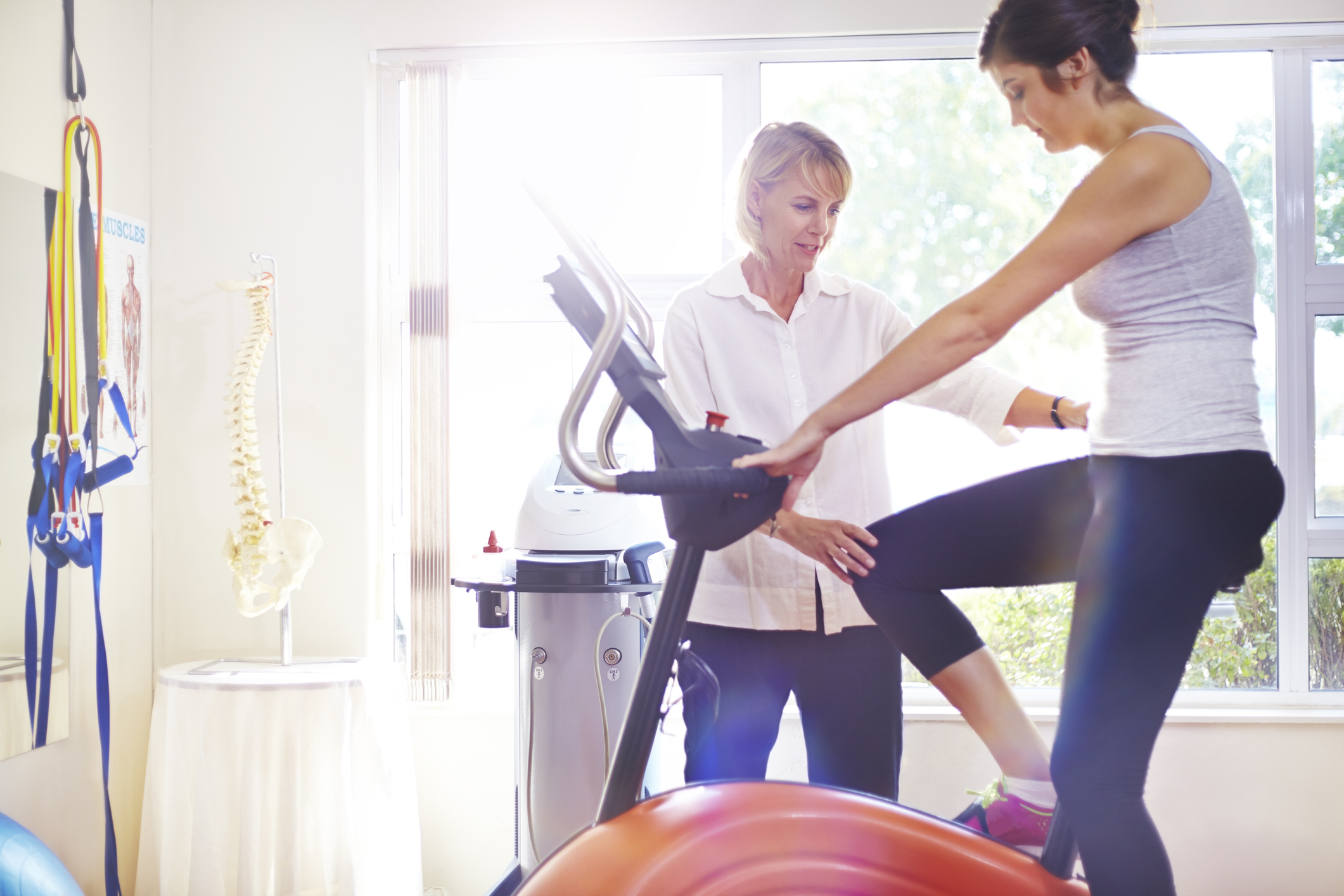6 Important Ways An Exercise Bicycle Can Help Your Sports Injury Clinic
In this article, we will first describe the role of exercise bicycles in sports medicine and how they can be used to rehabilitate sports or other injuries. We will then describe some of the criteria you may employ to decide whether an exercise bike could be usefully employed in your sport injury clinic. It is our hope that this information will help you decide whether an exercise bike would be a good investment in the rehab capabilities of your clinic.
The Role of Exercise Bicycles In Sports Medicine
Exercise bicycles, also known as stationary bikes, are an important part of exercise rehabilitation and are commonly used in sports medicine for various purposes. These versatile fitness machines offer low-impact cardiovascular workouts and can be tailored to meet specific rehabilitation and training needs. Here are several ways exercise bicycles are utilized in sports medicine:
Injury Rehabilitation
Exercise bicycles play a crucial role in the rehabilitation of athletes recovering from lower body injuries or surgeries. They provide a controlled and safe environment for gradually reintroducing movement and building strength in the affected areas. Cycling on a stationary bike helps improve range of motion, promote blood circulation, and restore muscle strength without placing excessive stress on the joints.
Cardiovascular Conditioning
Maintaining cardiovascular fitness is vital for athletes, even during periods of injury or rehabilitation. Stationary bikes offer an effective means of engaging in low-impact cardiovascular exercise. They allow athletes to continue training their cardiovascular systems while minimizing stress on injured or vulnerable areas.
Strength and Endurance Training
Exercise bicycles can be used for targeted strength and endurance training for the lower body. By adjusting the resistance level and intensity, athletes can work on specific muscle groups, such as the quadriceps, hamstrings, glutes and calves. This type of training can help improve muscular strength, endurance, and power, which are essential for optimal sports performance.
Interval Training
Interval training involves alternating periods of high-intensity exercise with recovery periods. Exercise bicycles are well-suited for interval training, as athletes can easily adjust the resistance and speed settings to simulate intense bursts of activity followed by periods of active recovery. This type of training can enhance cardiovascular fitness, improve anaerobic capacity, and boost overall athletic performance.
Performance Assessment
Exercise bicycles equipped with advanced monitoring systems and software can be used for performance assessment and monitoring. Athletes can track metrics such as heart rate, power output, cadence, and distance covered. This data provides valuable insights into an athlete’s fitness level, progress, and training intensity, allowing for informed adjustments to training programs.
Cross-Training and Active Recovery
Stationary bikes offer an excellent option for cross-training and active recovery. They provide a low-impact alternative to activities like running or jumping, allowing athletes to maintain fitness levels while reducing stress on the joints. Incorporating cycling sessions into training programs can help prevent overuse injuries, promote active recovery, and add variety to workouts.
Overall, exercise bicycles serve as valuable tools in sports medicine, offering a controlled and effective means of rehabilitation, cardiovascular conditioning, strength training, and performance assessment. By incorporating stationary bike workouts into their training programs, athletes can enhance their overall fitness, promote injury recovery, and improve their athletic performance.
Deciding Whether An Exercise Bike Would Be A Good Investment For Your Clinic
We will now suggest some important rules that you can apply to decide whether investing in an exercise bike would be a good step for your sport injury clinic.
When considering whether to invest in an exercise bike for a sports injury clinic, several criteria can help guide your decision-making process. Here are some factors to consider:
- Rehabilitation Needs: Evaluate the specific rehabilitation needs of your clinic’s patients. Determine if there is a significant demand for lower body injury rehabilitation or cardiovascular conditioning. If a substantial number of patients requires such interventions, an exercise bike may be a valuable addition to your clinic.
- Space Availability: Assess the available space in your clinic. Exercise bikes come in various sizes and designs, so consider whether you have sufficient room to accommodate the equipment comfortably. Measure the dimensions of the potential location to ensure it can accommodate the exercise bike and allow for safe usage.
- Patient Population: Consider the demographics and interests of your patient population. If you primarily treat athletes or individuals involved in sports and physical activities, exercise bikes are often a preferred option for low-impact cardiovascular workouts and lower body rehabilitation.
- Expertise and Staff Training: Determine whether your clinic has the necessary expertise and staff training to utilize exercise bikes effectively. Familiarity with the equipment, knowledge of proper protocols for rehabilitation, and the ability to guide patients in using the exercise bike safely are essential considerations.
- Budget and Cost: Evaluate your budget and financial resources. Exercise bikes can vary significantly in terms of features, quality, and price. Consider your available funds and compare different models to find one that aligns with your budget while meeting your clinic’s needs.
- Equipment Durability and Maintenance: Investigate the durability and maintenance requirements of the exercise bike models you are considering. Look for bikes that are built to withstand frequent use and have a reputation for reliability. Additionally, assess the maintenance needs, including cleaning, servicing, and potential repair costs.
- Potential Benefits and Outcomes: Consider the potential benefits and outcomes for your clinic and patients. Assess the positive impact an exercise bike can have on patient rehabilitation, cardiovascular health, patient satisfaction, and overall clinic reputation. If you believe it will enhance patient outcomes and contribute positively to your clinic’s services, it may be worth the investment.
- Patient Demand and Utilization: Determine the anticipated patient demand for an exercise bike. Consider whether there will be enough patient utilization to justify the investment. If you expect a high volume of patients requiring exercise bike-based rehabilitation, it may be a wise investment.
By carefully considering these criteria, you can make an informed decision about whether investing in an exercise bike is a worthwhile choice for your sports injury clinic.
Conclusion
In this article, we have described some of the applications of exercise bicycles in rehab clinics generally and specifically in sports injury clinics. We have also proposed some guidelines to be used in deciding whether you should invest in one of these bikes for your healthcare clinic.
If you are contemplating an investment in one or more stationary bikes for your clinic, it is our hope that this article will have some useful information that will help you make your decision.
However, should you have any questions or comments on this subject, you are welcome to leave them in the space provided below and we will respond as soon as possible.








